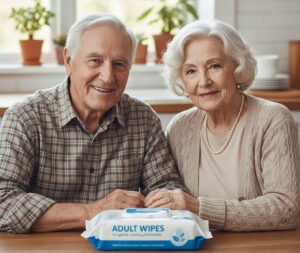In a post-pandemic world, travelers prioritize cleanliness and hygiene more than ever. Alcohol wipes have become a staple in carry-on bags, offering a quick way to disinfect surfaces like airplane seats, tray tables, and armrests. But before you toss a pack into your luggage, it’s crucial to understand the rules, benefits, and best practices for carrying alcohol wipes on flights. This guide covers everything you need to know.
1. TSA Regulations for Alcohol Wipes
The Transportation Security Administration (TSA) sets guidelines for what passengers can bring onboard. Here’s what you need to know:
- Alcohol Content Matters: Alcohol wipes typically contain 60–70% isopropyl or ethyl alcohol. The TSA permits these in both carry-on and checked luggage because they’re considered non-flammable in small quantities.
- Liquid Restrictions Don’t Apply: Unlike liquid hand sanitizers (which are limited to 3.4 ounces in carry-ons), alcohol wipes fall under “solid” items. There’s no volume restriction, so you can pack multiple packs.
- Packaging Tips: Keep wipes in their original sealed packaging to avoid confusion during security checks. Unmarked or loose wipes might prompt additional screening.
Pro Tip: Check the TSA website for real-time updates, as rules can change based on security advisories.
2. Why Bring Alcohol Wipes on a Flight?
Airplanes are high-traffic environments, and studies show that tray tables and seat belts harbor bacteria. Here’s how alcohol wipes enhance your travel safety:
- Disinfect High-Touch Surfaces: Wipe down armrests, tray tables, seat belts, and overhead vent controls.
- Prevent Germ Spread: Reduce the risk of catching illnesses like the flu or COVID-19.
- Convenience: Compact and lightweight, they’re easy to stash in your seat pocket or personal bag.
Did You Know? A 2018 study found airplane tray tables to be 8x dirtier than toilet flush buttons.
3. How to Use Alcohol Wipes Effectively
Maximize their benefits with these tips:
- Wipe Before You Sit: Clean your seat area as soon as you board.
- Focus on High-Risk Areas: Prioritize tray tables, touchscreens, and lavatory handles.
- Dispose Responsibly: Seal used wipes in a Ziploc bag to avoid littering.
Caution: Avoid using wipes on sensitive materials like leather seats, as alcohol can cause drying or discoloration.
4. International Flight Rules for Alcohol Wipes
While the TSA allows alcohol wipes, international airlines may have different policies. For example:
- Europe: The European Union Aviation Safety Agency (EASA) permits alcohol wipes but advises checking airline-specific rules.
- Asia: Countries like Japan and Singapore generally allow disinfectant wipes but may restrict liquids over 100ml.
- Middle East: Airlines like Emirates recommend pre-packaged wipes to avoid security delays.
Always verify with your airline before flying internationally.
5. Alternatives to Alcohol Wipes
If you’re concerned about restrictions or prefer other options, consider:
- Benzalkonium Chloride Wipes: Non-alcoholic and TSA-approved.
- Disposable Gloves: Pair with hand sanitizer for extra protection.
- UV Sanitizers: Portable devices that kill germs on surfaces.
6. FAQs About Alcohol Wipes on Flights
Q: Can I bring alcohol wipes in my carry-on?
A: Yes! The TSA allows them in any quantity.
Q: Do alcohol wipes count toward my liquid allowance?
A: No—they’re considered solids, unlike gels or liquids.
Q: Are alcohol wipes safe for kids?
A: Supervise children to prevent ingestion or contact with eyes.
Q: Can I use alcohol wipes on my hands?
A: They’re designed for surfaces, not skin. Use hand sanitizer instead.
Q: What if my wipes contain more than 70% alcohol?
A: High-concentration wipes (over 70%) might be flagged. Stick to 60–70% for safety.
7. Final Tips for Travelers
- Check Expiry Dates: Old wipes may lose effectiveness.
- Combine with Other Precautions: Wear a mask, wash hands frequently, and avoid touching your face.
- Respect Crew Instructions: Follow airline staff guidance if they request limited use of wipes mid-flight.
Conclusion
Carrying alcohol wipes on flights is a smart, TSA-approved way to stay protected during your journey. By understanding regulations, using wipes effectively, and exploring alternatives, you can travel with confidence. Always stay updated on airline policies and prioritize hygiene to ensure a safe and comfortable trip.





